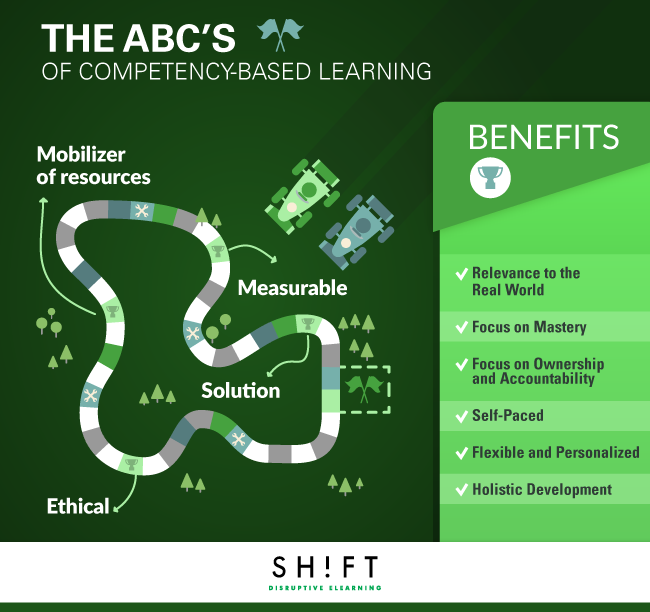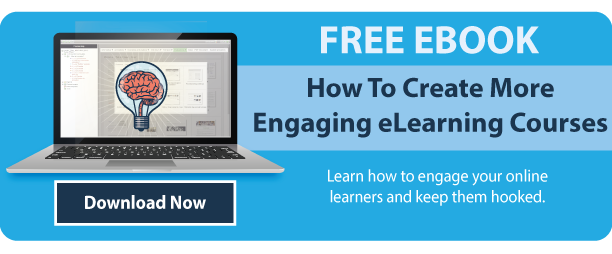Although classrooms offline have been delivering competency-based training for decades, the eLearning industry has only just woken up to the merits of this form of learning. However, competency-based training is yet to become a trend in online education simply because most designers and training managers are not sure what it means and how they can implement the concept in practice. So in this post we’ll be decoding the jargon.
For starters, here’s an infographic that outlines the whys and the wherefores of competency-based learning. Read on, if you want to learn more.
What is a Competence?
To put it simply, competence means a skill. Miguel Angel Lopez (2013) has defined competence as a person’s ability to put into practice his knowledge, how he/she performs specific tasks and his/her attitudes towards a job.
Competency is:
- Measurable. You can measure the levels of skill of two individuals based on their performances on similar tasks using identical tools.
- A solution. You will want to have a competent person as an employee because he is more likely to “apply” his knowledge and solve real-world problems than a person who knows theories, definitions, and concepts by heart and but NOT what to do with his knowledge.
- A mobilizer of resources. The competent person not only has the knowledge to do a job and troubleshoot problems but also possesses the skills and the attitudes to apply his learning in the real world.
- Ethical. A competent person does not resort to unethical means to get a job done. He relies on his knowledge and the ability to apply his knowledge to do a job.
What is Competency-based Learning?
Remember how you learned mathematics in school? You learned addition, subtraction, multiplication, and division before you were taught how to solve complex problems on simple and compound interest. You were promoted to a higher class only if you passed some test. Most new learning builds upon prior knowledge. This is why competency-based learning is effective.
Competency-based learning lets learners move through a course at their own pace. The course delivers new learning based on previous test scores. The focus is NOT on completing a training program within a specific time. Competency-based training does not randomly “dump” knowledge on the learner; it ensures that the learner has attained the required degree of mastery in some subject before he moves to a higher level of learning where he will have to build on his prior knowledge. This makes learning most effective because it leaves no skill gaps.
What are the Benefits of Competency-Based Learning?
After evaluating which competencies are important to your company and specific job positions, you then have to design eLearning courses around those competencies. The many benefits of this form of learning include:
1) Relevance to the Real World:
Because its focus is on a practical application of the knowledge acquired, competency-based learning is relevant to the real world.
Tip: Do not create instructional modules that just state the mere facts. Instead, use scenarios and case studies that illustrate the practical application of the knowledge. Also, design assessment activities that test the learner’s ability to solve real-life problems with his knowledge.
2) Focus on Mastery:
The peculiar nature of competency-based learning is that here learners are not allowed to move on to the next level of learning till they have demonstrated mastery of certain skills.
Tip: Specify clearly the desired learning outcomes right at the start of a module. This sets learner expectations and prevents disappointment and frustration later. Create opportunities to reinforce the material to make this application-based learning most effective. For instance, provide detailed feedback where you tell learners why they are right or wrong or which is the next best solution.
3) Focus on Ownership and Accountability
Competency-based training programs compel learners to take charge of their learning experiences. Learners can take programs based on their knowledge levels and skills. This creates a collaborative environment where learners feel supported and hence, motivated to learn.
4) Self-Paced
Modularization of learning imparts flexibility to the course and lets learners pace it according to their needs or based on how they have scored on the assessments. This gives a sense of being in control, a feeling that appeals to the adult corporate learner. As for you, you can create a myriad of courses cost-effectively by just combining various modules.
Tip: Create independent or stand-alone learning modules.
5) Flexible and Personalized
Modularization also enables flexibility and personalization. You can deviate from the linear structure of a conventional eLearning course, deconstruct the learning, and allow learners to access the instructional modules in a non-linear way according to the level of mastery they have attained. This creates personalized learning experiences that make a program more effective.
6) Holistic Development
One of the greatest benefits of competency-based learning is that it focuses on the integrated development of an individual. The learner learns how to acquire knowledge and apply it to solve real-world problems. He also develops the attitudes—proactively seeking knowledge and being motivated to develop one’s skills—needed along with the theoretical knowledge to get by in the real world.
Resources to check out:
- How to Create a Competency-Based Training Program
- 4 Ways to Implement a Competency Based Training
- How to Create a Competency-based Training Program




